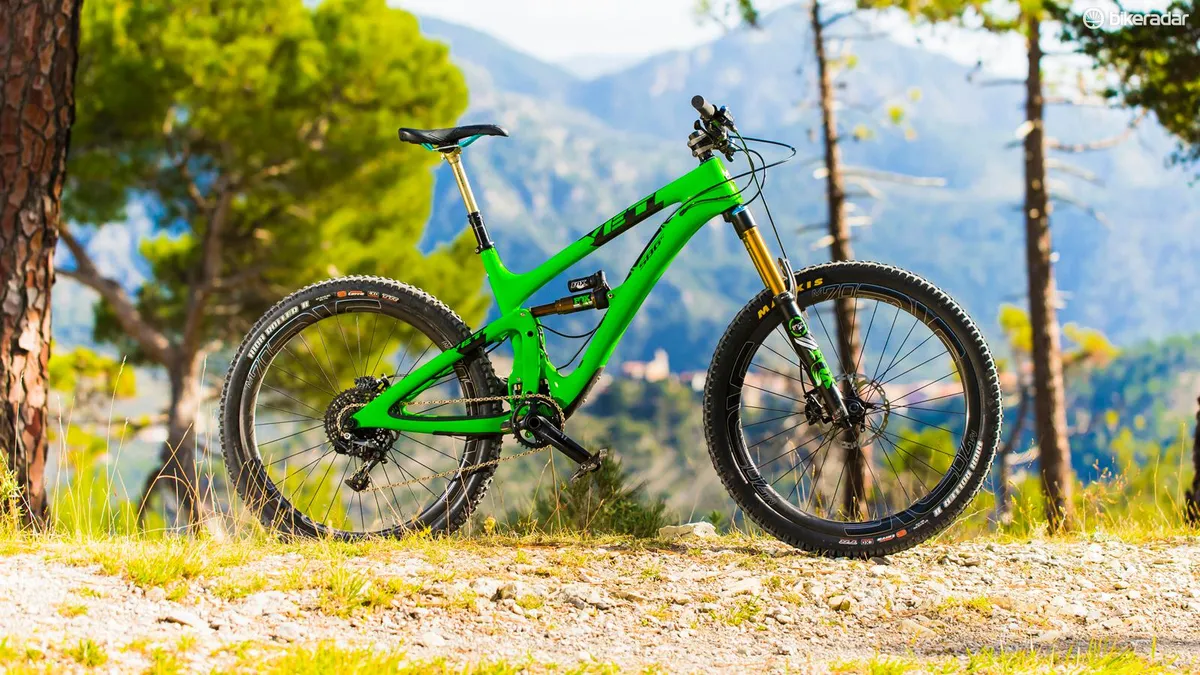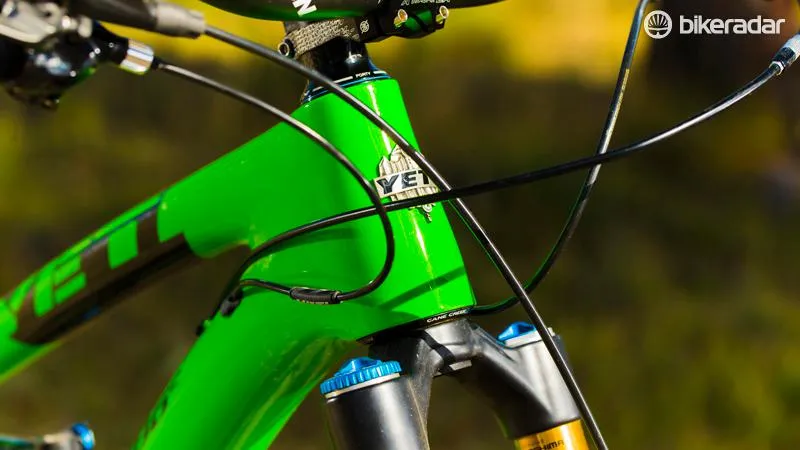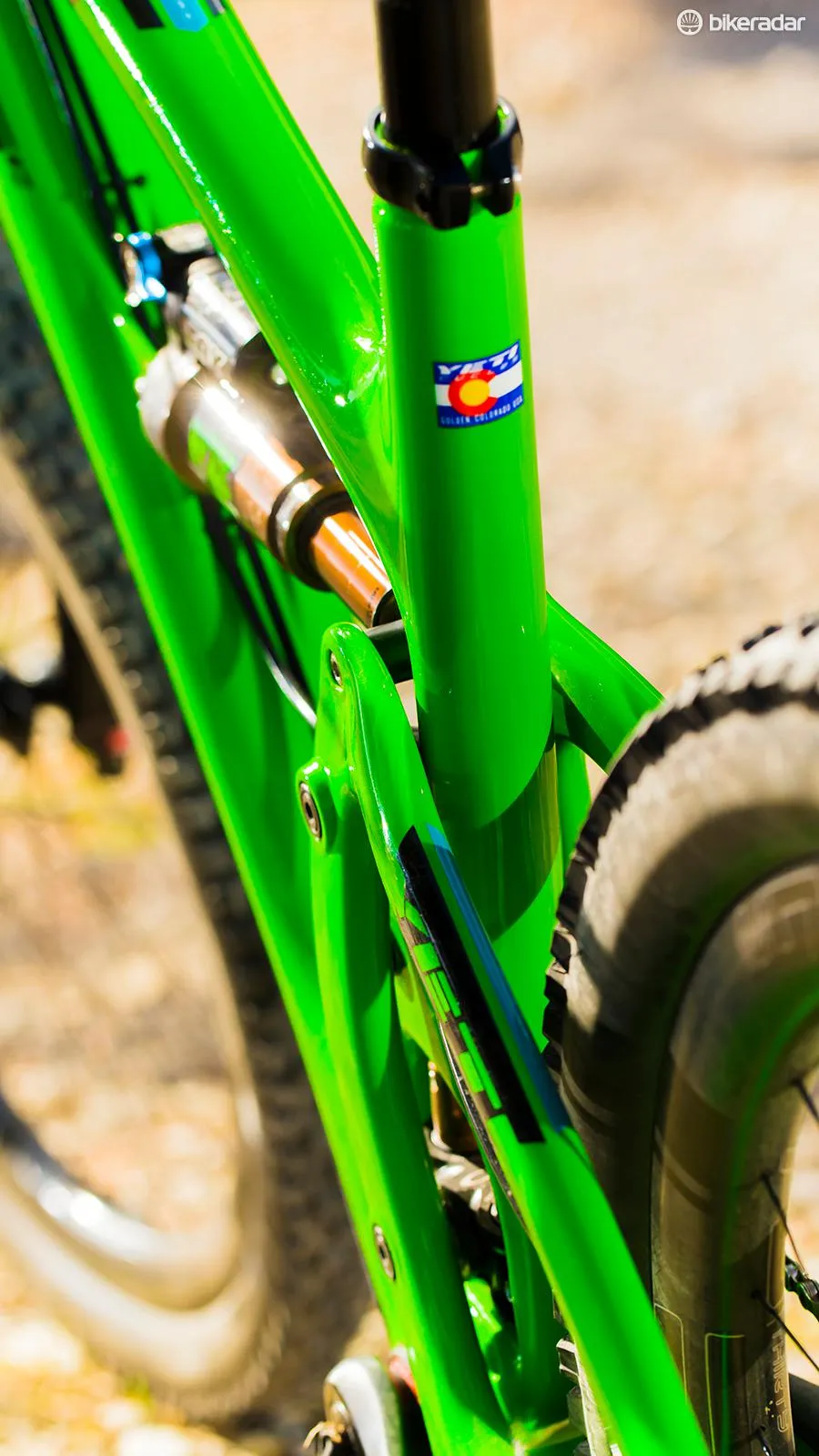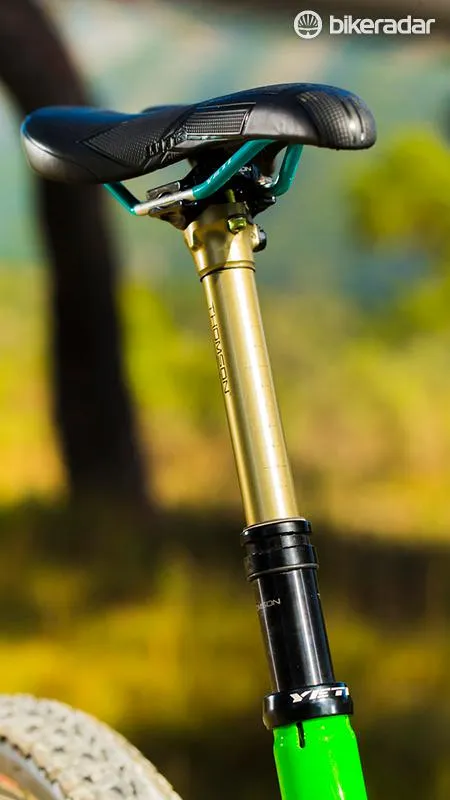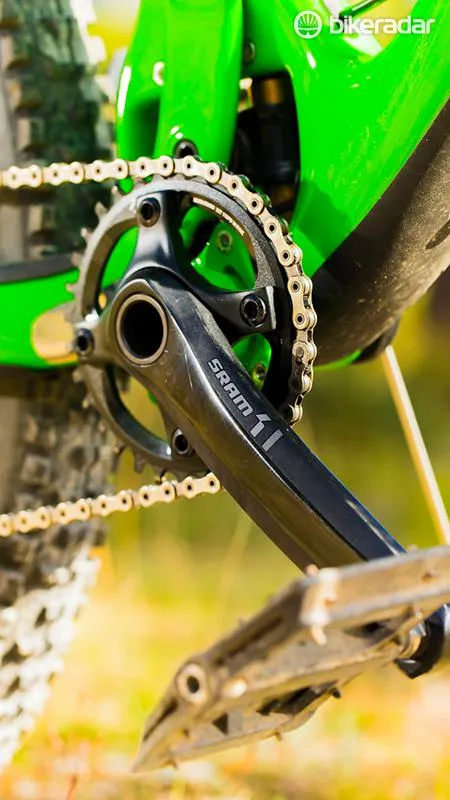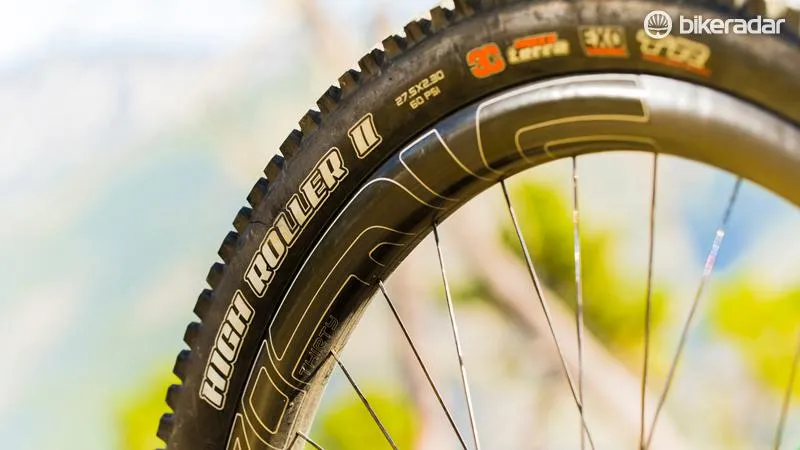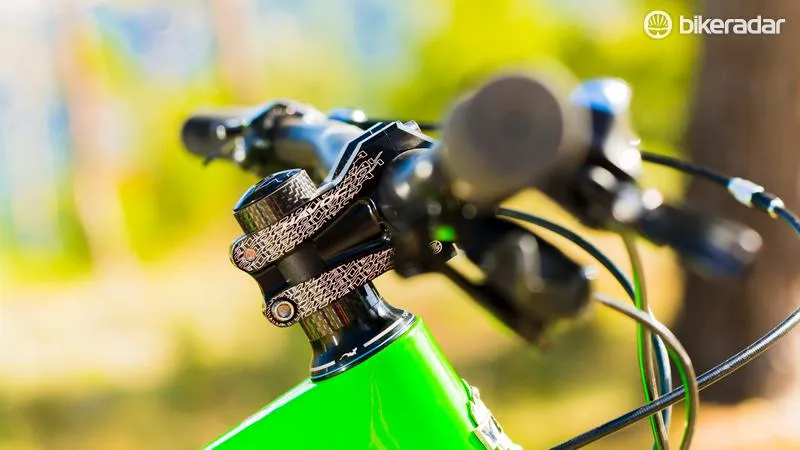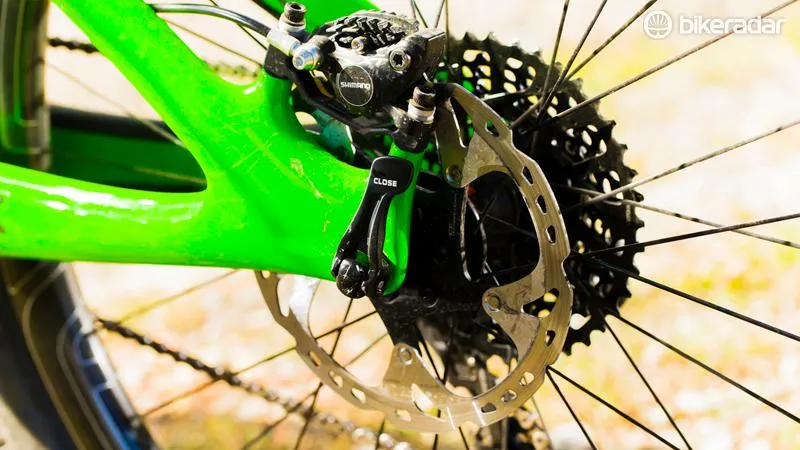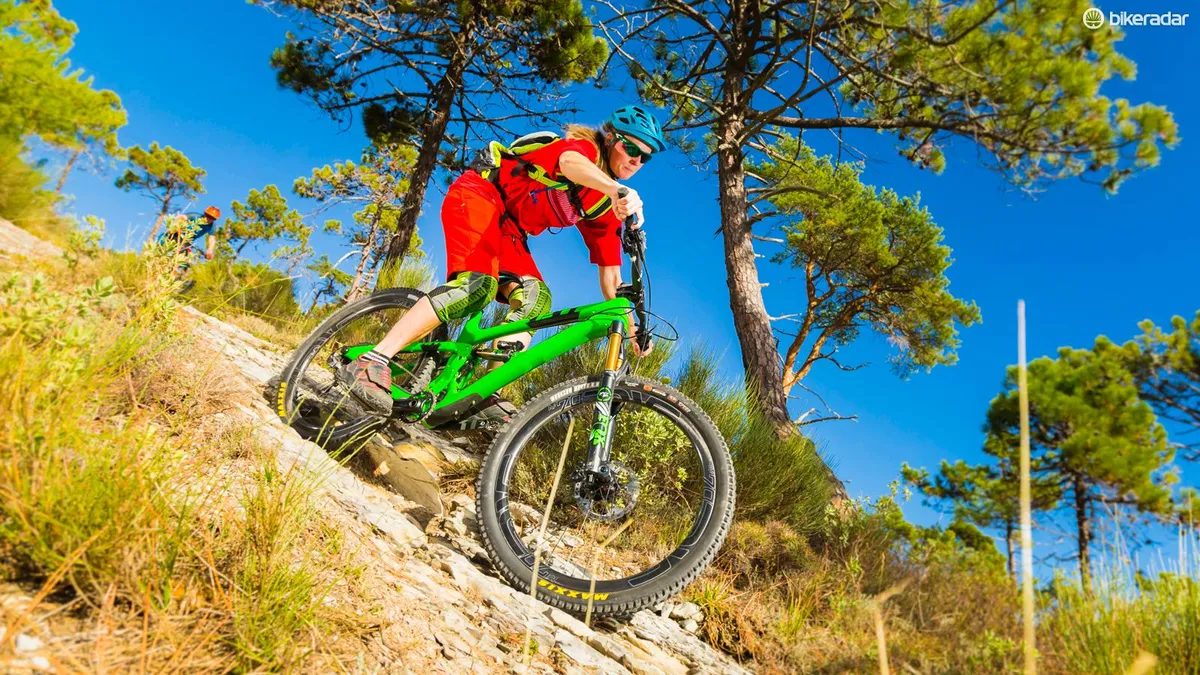Yeti’s always been up to its eyeballs in racing and has certainly used some weird and wonderful ideas to try and find a winning edge along the way.
Hooped BMX-style rear ends, carbon and steel specials, rubber bumpers on sticks and 60-tooth chainrings, parallelogram pivot systems, sliding rails, rotating eccentrics… they’ve all appeared on the trademark turquoise machines. Its latest innovation is no less radical, but delivers outstanding no-brainer performance in every situation as its development race history shows.
- Highs: Great geometry and sorted suspension for enduro DH winning and climb conquering speed
- Lows: It’s a ton of money
- Buy If: You can afford a genuine do anything damn fast trail machine and like to flash the latest tech
Frame and equipment: Graves diggin'
We’re not talking just any races either. Yeti’s multi-discipline racer and development rider Jared Graves took the SB6C’s predecessor – the SB66C – to third place at the 2013 DH World Championships in Pietermaritzburg. That specially prepped bike also ran a 180mm travel Fox 36 fork to give 65-degree head angle geometry that’s an obvious precursor to the 65.5-degree head of the SB6C.
Graves has since won two rounds of the Enduro World Series on board prototypes of the SB6C, which saw it get a lower bottom bracket and longer wheelbase than the SB66C as well as significantly swollen super-oversized carbon tubes right through. That means a sub-6lb chassis weight even with two seriously stiff frame halves and the unique Switch Infinity suspension system sitting in a big window at the base of the seat tube.

The twin shaft Switch Infinity system is actually a lot simpler than it looks, and saves 100g over the previous eccentric mounted version
Switch Infinity replaces the eccentric mounting drum of the original Switch system with two vertical Kashima coated Fox Shox built shafts. These let the main pivot slide a few mm up and then back down as the suspension goes through its stroke, slightly altering the wheel path and its relation to chain torque in the process.
Ride and handling: to Infinity and beyond
Having spent ages trying to find a pedal friendly but progressive sweet spot with the original Switch setup we prepared to tune the new system for an appropriately Infinite time. Yeti, Graves and Fox have obviously been working hard, because shock response is pretty much pitch perfect in every situation. The Float X piggyback shock is comfortably smooth and vacuums up as many big hits as you want in Descend mode but there’s still enough support to feel the tyres in corners, or pop and hop if it’s faster or just more fun. Flick it into Pedal mode and you can really drive the bike hard through the pedals or turns but the wheel path and shock rate deflection means it still sticks well over small stuff without hanging up on big boulders.
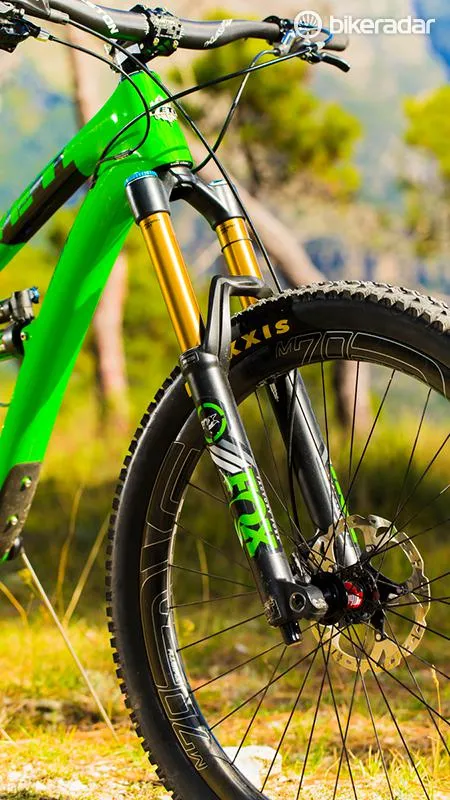
Fox’s revamped 36 fork is a massive improvement over the 34 in terms of stiffness and accuracy
Give it a car park wrestle and there’s definite flex through the unavoidably narrow Infinity architecture and upper swing link. However, the super-stiff frame sections, guttering girth Enve carbon rims, the long, low geometry and vice-like grip from the Fox 36 fork meant it never overshot a line or apex on the trail whether we were blatting down red/black runs or charging back up them.
Even with slow, growly grip Maxxis High Roller II rubber we took several minutes off our previous five-lap Power Hour time at North Yorkshire's Stainburn trail centre. Interestingly, as well as getting close to our best downhill times, we consistently bested our PRs up the relentlessly technical, rocky, twisty black-rated climb back up, including a KOM on our third lap – useful statistical proof that Yeti’s new green dream machine is a true race-anywhere all-rounder that creates a whole new benchmark for 2015.
